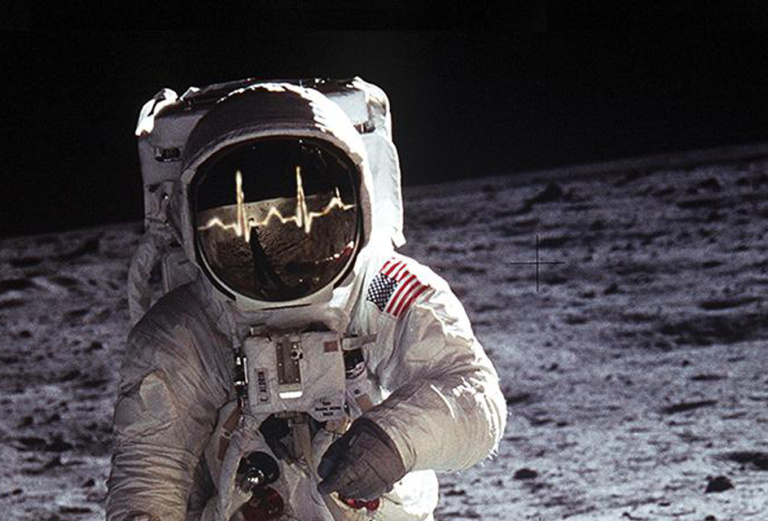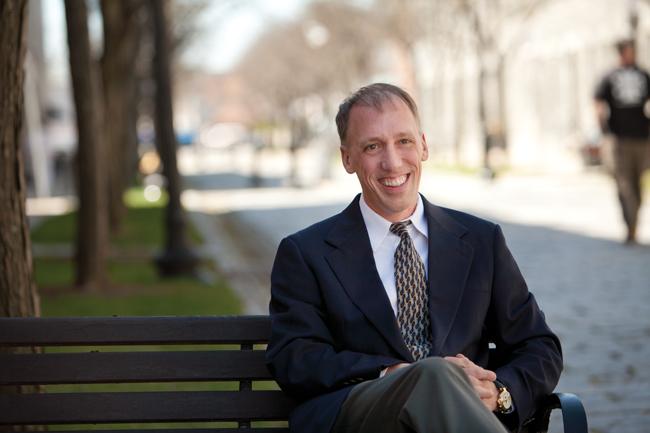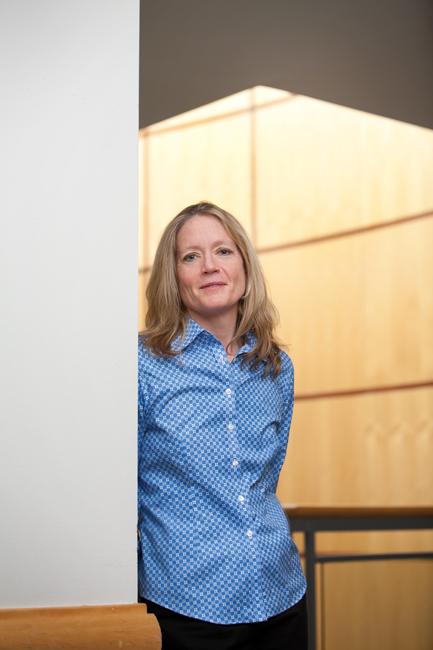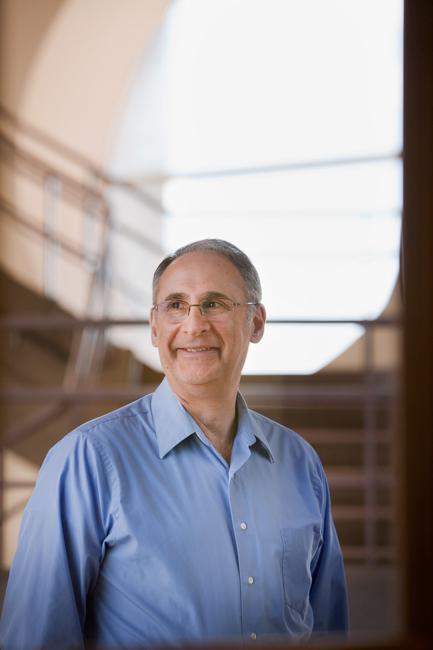Star Guide
Biomedicine reaps rewards from scientific pursuits in space
- Profile

Try as you might, there’s no way you can cram an MRI onto a spacecraft, not if you want to get it off the ground. But bringing such a device along would help determine what happens to astronauts’ brains beyond Earth’s atmosphere. Space, after all, is not a friendly place for the human brain: low-grade radiation bombards it, and hypoxia or hypercarbia can occur if equipment that generates oxygen or removes carbon dioxide in a spacecraft’s tight confines isn’t tweaked correctly.
All of these assaults change the brain’s physical properties in ways that can be measured with neuroimaging tools. But if unwieldy instruments such as MRIs can’t make the trip, what might fill the imaging void? Gary Strangman and his team of investigators think they have the answer: a near-infrared neuroimaging system, known as NIN. Compact and easy to use, NIN was developed for use not only in the isolation of space but also in the oxygen-thin heights of mountains and the injury-thick sidelines of sporting events.

Strangman, an HMS assistant professor of psychology and a neuroimaging researcher who directs the Neural Systems Group in the Department of Psychiatry at Massachusetts General Hospital, has developed the pocket-sized imaging system, which will allow astronauts to monitor their brain health while aloft. NIN can assess brain activity, edema, and oxygenation in the outermost inch of the brain at sensitivities that rival those of fMRI. Getting a clear picture of this area, the outermost cortex, is critical to determining the vitality of the higher order cognitive processes essential to sound decision making. Strangman’s research is supported by the National Space Biomedical Research Institute.
NIN measures the brain’s relative health by picking up the absorption spectra of near-infrared light sent into the head by a pair of lasers. Based on these measures, NIN identifies areas of oxygenated and deoxygenated blood in the brain as well as concentrations of fluid from edema. The team is now testing whether the device is ready for the rigors of space.
Although NIN will never replace the deep imaging and exquisite spatial detail of a full-scale MRI scan, the handheld device could be a useful tool for health care professionals working in remote communities, at sporting events, and on the frontlines of civilian and military emergency medicine, Strangman says. His team is also testing NIN at high altitudes to learn more about the physiology of acute mountain sickness, a debilitating malady linked with the cognitive confusion and respiratory distress experienced by people unaccustomed to high altitudes, a group that includes U.S. soldiers deployed in the mountains of Afghanistan.
Architectural Detail
Clues to bone loss are found in space
Bones are not the static, solid organs they seem. Exposed to stress from gravity or exercise, they grow bigger and stronger. Removed from such weighty obligations, they wither and weaken. For personnel on the International Space Station, this latter response is a constant worry: on average, space-traveling astronauts lose bone mass at the rate of 1 percent a month. That’s ten times faster than the rate of bone loss among postmenopausal women.

“Without mechanical loading on the bones,” says Mary Bouxsein, an HMS assistant professor of orthopedic surgery and a faculty member of the bioastronautics program in the Harvard–MIT Division of Health Sciences and Technology, “biochemical changes that signal bone loss can be found in the blood in just a couple of weeks.”
Actual loss follows quickly, and long missions increase the risk. If a year on the space station can jeopardize the structural integrity of an astronaut’s skeleton, imagine the difficulties a three-year round trip to Mars could present to a space explorer.
For decades, NASA has been investigating ways to stem bone loss among astronauts. Medical research has also sought a means to prevent such loss in patients immobilized by stroke or spinal-cord injury, or in children with cerebral palsy or muscular dystrophy. Now, NASA–funded work by Bouxsein and colleagues at the University of North Carolina and the University of Colorado in Boulder, in collaboration with the California-based biotech firm Amgen, may provide an answer.
Researchers have been testing a novel drug that uses an antibody to block sclerostin, a protein that acts as a natural brake to bone formation. Preventing sclerostin’s action allows new bone to be laid down. In July 2011, Bouxsein tested the drug in 15 mice on board the shuttle Atlantis. When she compared bone-mass data from these test mice against bone measures from shuttle-based controls as well as Earth-based mice receiving treatment or serving as controls, Bouxsein found that the drug not only helped the test mice maintain bone mass but appeared to induce new bone to form, even in low-gravity environments. If these results hold true in humans, the danger to bone health brought by space travel—or disease—could become a thing of the past.

Shaken and Stirred
When perceptions conflict, motion sickness ensues
Motion sickness is an unforgettable experience for anyone who has ever been afflicted by it. The roiling symptoms can strike while on a boat, in a car, on an airplane, and even while floating weightless in a spacecraft.
Unexpected and unfamiliar motion cues received through vision, the inner ear, and body movement are at the core of the disorder. To get a sense of how closely integrated visual, vestibular, and proprioceptive cues are, try balancing on one foot with your eyes closed.
Charles Oman, an affiliated faculty member of the Harvard–MIT Division of Health Science Technology and director of the Man Vehicle Laboratory at MIT, learned to fly as a teen, developed an interest in air sickness, and, in the late 1970s, began working with NASA to find ways to prevent or lessen the impact of motion sickness among astronauts. Oman proposed that, during deliberate movement, the brain learns what signal pattern to expect from the otoliths and semicircular canals—two of the sensory structures of the inner ear—and cancels these signals out at the brainstem. However, when we unexpectedly stumble or fall, those signals, which affect our sense of balance, remain active and move to the brain’s cortical regions where stabilizing reflexes are generated.
These two normal responses—ignoring deliberate movement and stabilizing unexpected motion—are disrupted if signals conflict with the expected patterns. The conflict occurs during weightlessness and other situations where the sensations that the inner ear feels and the sights that the eyes see don’t match anything that the brain recognizes as normal motion. Oman hypothesized that this conflict between expected and perceived motion triggers sensory motor learning—and the woe of motion sickness. His theory could explain why drivers rarely get carsick as well as why astronauts get space sick, adapt after several days, and then become sick again when they return to Earth.
Oman notes that a longstanding debate over whether these “sensory conflict” signals exist may now have ended. Using an animal model, researchers recently found brainstem neurons that govern the sensory conflict behavior of the semicircular canal and otolith structures. These neurons are in the reticular formation, a brain area that detects and prioritizes new sensory inputs. The cells are also adjacent to the brain’s emetic centers. It appears that when sensory conflict neurons become overloaded, the signal spills into the nearby emetic centers, eventually causing malaise and nausea. Hence the existential bleakness of motion sickness may be a simple evolutionary accident of brain wiring.
Oman often experienced weightlessness and disorientation in parabolic flight: When he floated upside down, the ceiling would suddenly appear to be the floor. Oman realized that this sudden shift in orientation could provoke space sickness. “We told the astronauts, ‘Look, if you want to avoid being sick, you and your crew need to all stay visually upright during your first days in orbit,’ ” Oman says. “ ‘If one of your buddies floats into view and his body is upside down relative to you, that will flip your world upside down. That’s a recipe for space sickness.’ ”
Heart Strings
Decoding signals hidden in a heartbeat
The pulse pounds, breath grows shallow, and blood pressure rises: These are simple physiological responses to excitement or exercise. But as basic as these processes are, they are accompanied by cascades of mechanical, biochemical, and electrical signals. To Richard Cohen ’75, this cacophony of data is simply the music of research.
When Cohen entered the inaugural HMS class of the Harvard–MIT Division of Health Science Technology, he had a plan.

“I wanted to analyze and process the second-to-second, minute-to-minute fluctuations in the signals that biological systems generate,” says Cohen, a member of the core faculty of HST and the Whitaker Professor in Biomedical Engineering at MIT.
It turned out that NASA and the National Space Biomedical Research Institute were also interested in deciphering those signals: They wanted to determine whether space flight might have long-lasting impact on the cardiovascular health of astronauts.
Cohen began working with NASA, and later, with NSBRI, and eventually developed a tool that characterizes cardiovascular responses by analyzing the relationships between ongoing fluctuations in such physiologic signals as respiration, blood pressure, and heart rate.
Cohen discovered that hidden amid the electrical noise in an ECG trace is a tiny signal that can provide clues about a person’s susceptibility to sudden cardiac death, a form of arrhythmia that kills 300,000 people a year in the United States.
This signal, known as microvolt T-wave alternans, can’t be detected by looking at an ECG. It can be extracted only mathematically, using algorithmic filters.
The technology Cohen’s team developed is now used as a diagnostic tool to help identify candidates for implantable defibrillators, which can prevent many sudden cardiac deaths.
Cohen has now been listening to the music of physiological data for decades. Even his research is stamped with this interest: One of his first papers was “Beat to beat variability in cardiovascular parameters: Is it noise or music?”
He seems to have found his answer. “Not only is it music,” he says. “It’s a whole symphony.”
Jake Miller is a writer and editor in the HMS Office of Communications and External Relations.